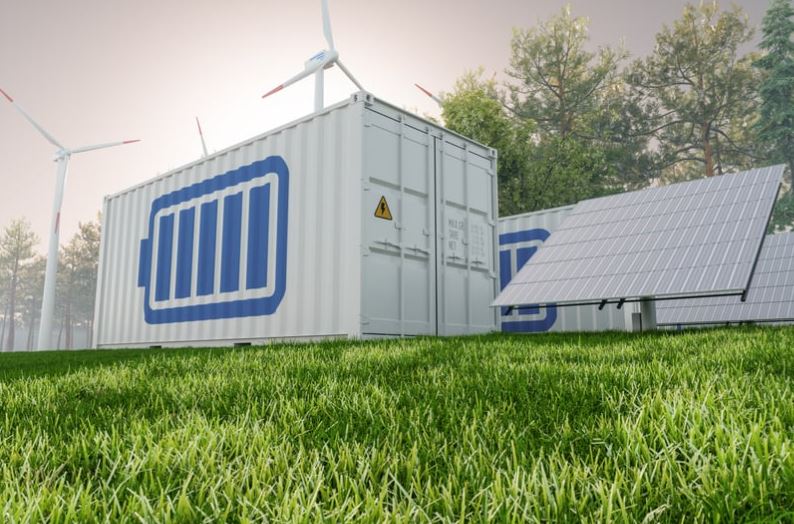The United States deployed 5.6 GW of battery energy storage between April and June 2025, marking the highest quarterly installation rate on record, according to data released by the American Clean Power Association and Wood Mackenzie.
The figure represents a 62% year-over-year increase in utility-scale capacity, yet the sector faces regulatory headwinds that could curtail expansion as early as 2027.
Utility-scale projects dominated the quarter with 4.9 GW of installations—sufficient to support 3.7 million homes during peak demand periods. California, Texas, and Arizona each surpassed 1 GW in individual state deployments, reflecting regional grid operators’ accelerating focus on dispatchable storage to manage renewable intermittency. Wood Mackenzie projects Florida and Georgia will emerge as major markets, driven by procurement mandates from vertically integrated utilities. Georgia Power’s recent 500 MW request for proposals underscores this shift, particularly as southeastern utilities work to meet decarbonization targets without sacrificing grid reliability.
The growth trajectory, however, confronts material supply constraints tied to federal tax credit eligibility. Projects initiated after 2025 must comply with revised Investment Tax Credit battery sourcing requirements—a threshold that excludes components manufactured by Foreign Entities of Concern. While domestic cell production capacity is expanding, the gap between demand and qualified supply remains substantial. Developers continue evaluating Chinese suppliers to bridge shortfalls, creating compliance risks for projects that miss construction milestones by year-end 2025. Wood Mackenzie’s Allison Weis warns that permitting delays could compound these challenges, particularly for co-located solar-plus-storage installations already navigating complex interconnection queues.
This regulatory uncertainty manifests in Wood Mackenzie’s forecast: utility-scale storage installations may decline 10% year-over-year in 2027. The projection reflects developers’ strategic behavior—accelerating construction schedules to lock in current ITC terms while delaying projects unable to meet sourcing standards. The result is a front-loaded deployment curve that could create a supply gap in the late 2020s, precisely when grid operators anticipate needing dispatchable capacity to support coal and natural gas retirements.
The residential segment recorded 608 MW in Q2, a 132% annual increase driven by California, Arizona, and Illinois. EnergySage data shows battery attachment rates in California reached 79% of quoted solar projects—second only to Hawaii’s mandated 100% rate. Texas followed at 61%, Arizona at 47%, with Utah, Florida, and Illinois trailing at 44%, 43%, and 25% respectively. These figures indicate batteries are transitioning from optional add-ons to standard solar system components, particularly in markets with time-of-use rates or unreliable grid infrastructure.
Wood Mackenzie analyst Allison Feeney attributes residential storage’s resilience to policy insulation and sustained ITC access through third-party ownership structures. Unlike utility-scale projects, residential systems avoid Foreign Entity of Concern restrictions when financed through leasing arrangements, creating a regulatory arbitrage that favors distributed installations. Puerto Rico’s high attachment rate—driven by grid fragility following hurricane damage—demonstrates how infrastructure reliability concerns override cost considerations in deployment decisions.
Commercial and industrial installations added 38 MW in Q2, an 11% sequential increase concentrated in California and New York, which accounted for over 70% of segment capacity. Illinois gained market share as the state’s energy storage procurement goals take effect, though the segment remains constrained by interconnection bottlenecks and demand charge structures that limit economic returns for behind-the-meter systems.
The aggregate forecast projects US storage capacity will reach 87.8 GW by 2029, with residential and utility-scale segments driving growth. Yet this projection assumes regulatory clarity materializes around Foreign Entity of Concern guidelines and domestic manufacturing scales sufficiently to absorb demand. Neither assumption is guaranteed. If sourcing requirements remain ambiguous or domestic cell production lags, the 2027 decline could extend into 2028, creating a shortfall precisely when renewable penetration necessitates increased storage capacity to maintain grid frequency and voltage stability.
The Q2 data exposes a fundamental tension in US energy storage policy: aggressive deployment targets collide with supply chain nationalism. Developers must navigate a narrowing window to secure grandfathered ITC status while planning for a post-2025 regulatory environment where battery provenance determines project economics.
Stay updated on the latest in energy! Follow us on LinkedIn, Facebook, and X for real-time news and insights. Don’t miss out on exclusive interviews and webinars—subscribe to our YouTube channel today! Join our community and be part of the conversation shaping the future of energy.
